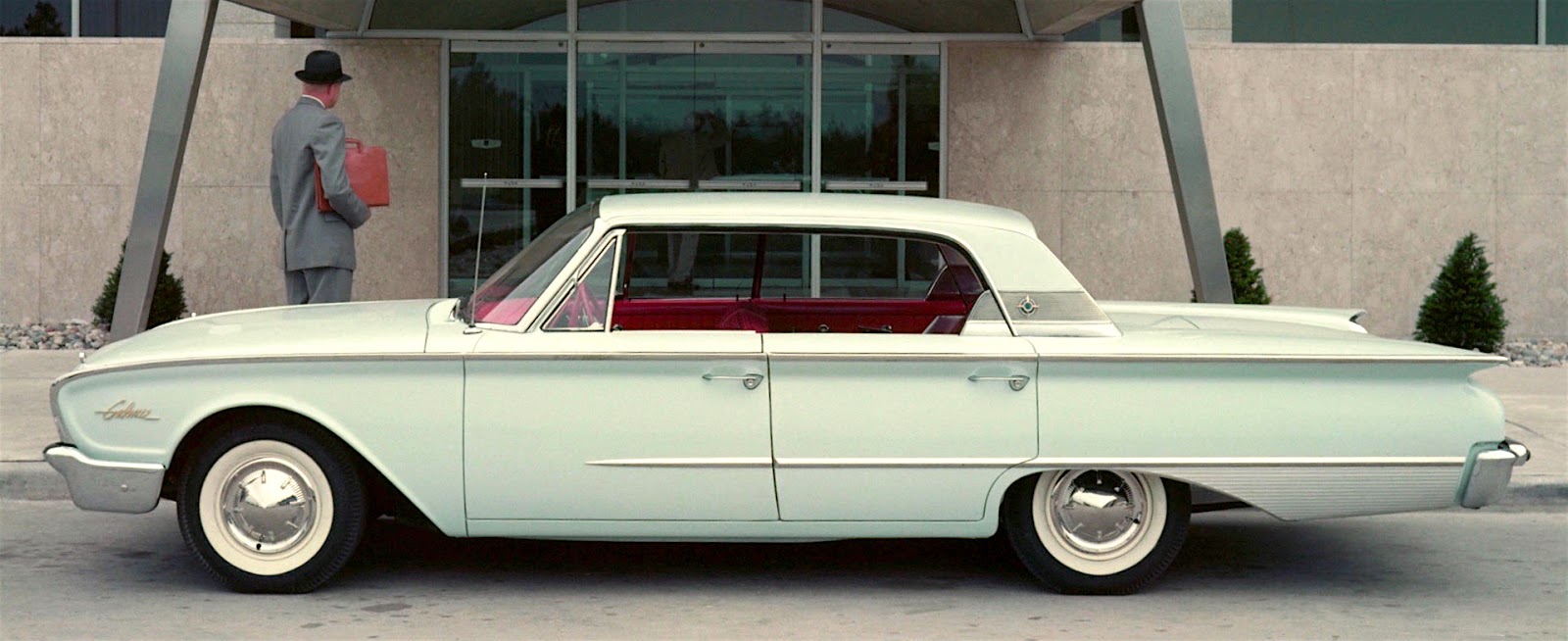A discussion of the Biscayne can be found here. Like many other GM 1950s dream cars (what they were popularly called at the time), the Biscayne was to have been destroyed. But by a quirk of fate it was not, and is now part of the Bortz collection of concept cars. Some background on this can be found here and here.
The Biscayne is interesting because its size. It was designed at a time when American sedans were becoming wider and longer. I couldn't find size statistics, but estimating from photos, my best guess is that the Biscayne's wheelbase was about 108 inches (2,743 mm), in the range of "compact" cars introduced by GM, Ford and Chrysler for the 1960 model year or early 2000s Ford Mondeos.
The nicest feature in my opinion is the treatment of the passenger greenhouse. It's light and airy while the roof's side curves and the C-pillars add the right touch of solidity. The interaction of the aft side windows, the backlight (back window) and C-pillars works very well. The side sculpting that extends around to the rear is also well handled. In contrast, the front end has a number of odd features.
Here are two studio photos of the Biscayne. The windshield is doubly wrapped -- around to the sides and up and over to blend with the car's top. Production windshields with these features would appear on some 1959 GM cars.
The five images below seem to have been taken at the same photo shoot because the same house is in the background. Colors vary due to aging of the original photos. I adjusted these internet-based images as best my iMac would allow.
The Biscayne's rear is cleaner than the front. And there are bumpers of a flimsy sort, unlike the unprotected front.
The two side views above help show the size of the car. They also illustrate door hinging and the black & white photo offers a peek at the interior with its large (by present standards) steering wheel. The rear-hinged "suicide" doors probably were included to eliminate the engineering required for a stiffened half-B-pillar such as was used on GM's 1956 production four-door hardtops. However, the classic early-1960s Lincoln Continentals did have rear-hinged doors for backseat passengers, though with a stub B-pillar.
A closer view of the front end. The bug-eyed, toothy look is distinctive, but in an odd sort of way. A production version would have required a bumper even in those pre-regulation days. And that addition would have destroyed the the entire frontal design theme aside from the headlight arrangement. A production Biscayne with today's technologies might retain the general appearance of the show car's front, though the fender fronts would have to be rearranged.










































